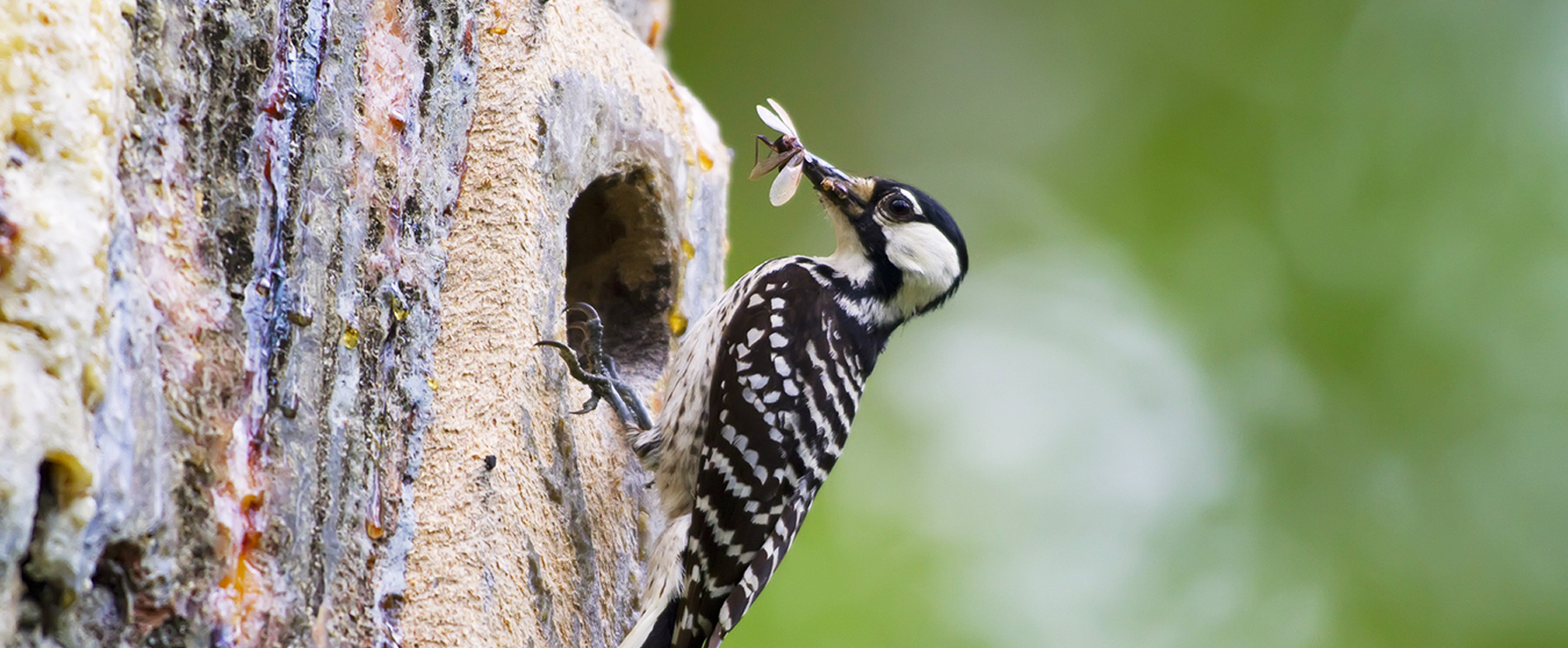A Virginia Tech graduate student is living in one of the hottest and driest countries in the world this semester so that he can study how climate change, land management, and other human-caused phenomena impact a community of animals known as the cavity guild.
Composed of birds, reptiles, mammals, amphibians, and invertebrates, the cavity guild, biologically speaking, is a group of animals that depend on holes and crevices in trees for their nesting sites.
However, Namibia receives only 2-24 inches of rainfall annually, leaving the landscape devoid of large trees. To exacerbate the problem, trees that are able to survive and grow in such a water-scarce environment are subject to removal for charcoal production, a common energy source in Namibia.

“Species in this community are especially vulnerable to the effects of climate change due to their habitat needs,” said David Millican, of Greensboro, North Carolina, a doctoral student in the Department of Biological Sciences in the College of Science. “Weather in Namibia is highly variable, with yearly droughts occurring in unpredictable intervals. This variation in weather may likewise cause extreme variations in community dynamics, with some species opting not to breed in years of extreme drought and others altering the timing of their breeding in response to the altered rain schedule.”
The goal of Millican’s research is to provide critical information on how the cavity guild community is structured.
Topics of interest include what tree species are most utilized by cavity nesters, the most important processes of cavity formation, and the intensities of the competitive interactions between species. Answers to these questions will help ensure the preservation of the community and its members.
While in Namibia, Millican partners with the Cheetah Conservation Fund, an international nonprofit organization based just outside of Otjiwarongo. As a visiting researcher there, he has access to research facilities and the center’s farm properties for fieldwork. Currently, he is searching for and monitoring tree cavities in 20 sites, each approximately 40 acres in size.
“David’s work continues our lab’s tradition of conducting basic research with conservation applications and of studies of cavity guilds around the world,” said Jeff Walters, the Harold Bailey Professor of Biological Sciences in the College of Science and co-director of the Interfaces of Global Change graduate program. “He is seeking to determine how connections between cavity resources and the species who use them, and interactions between those species, determine the abundance and diversity of cavity-dwellers. That knowledge can inform forest-management practices in order to integrate conservation with the needs of the people that depend on these habitats.”
As an Interfaces of Global Change Fellow, Millican received a grant from Virginia Tech’s Global Change Center to add a social science component to his fieldwork this semester. Each year, the center, which is housed in the Fralin Life Science Institute, accepts proposals from graduate students to support interdisciplinary research and research-related travel that address both basic and applied aspects of global change science.
“David’s proposal stood out because he seeks to engage Namibian indigenous communities so that they can be part of the solution to this incredibly complex environmental problem. Most conservation issues require engagement of local stakeholders to be successful, and David is determined to make this a team effort,” said Bill Hopkins, the center’s director. “To this end, David has also surrounded himself with faculty expertise in ornithology, ecology, and social science, representing the type of interdisciplinary research that the center seeks to promote.”
To best prepare himself for engagement with stakeholders, Millican teamed up with Ashley Dayer, an assistant professor of human dimensions in the Department of Fish and Wildlife Conservation in the College of Natural Resources and Environment. Dayer, a social scientist, teaches a graduate course called Human Dimensions of Fisheries and Wildlife that educates students about how current domestic and international issues can be addressed through an understanding of human thought and behavior.
“Dr. Dayer and I are keen to understand the wildlife perceptions of communities throughout Namibia, including private landowners and tribal communities,” said Millican. “Namibia is a very diverse country, composed of communities with many different African tribal origins as well as European origins. To understand and incorporate the values of these unique communities into conservation outreach campaigns, we plan to hold focus group interviews with indigenous groups. Our goal is to understand how these different indigenous regions overlap and differ in their perceptions of wildlife to identify flagship species that could unite people in conservation action.”
Flagship species, as students learn in Dayer’s class, are an umbrella species for conservation of a habitat type or suite of species that are chosen for a conservation campaign based on their importance to people, rather than their ecological role. Flagship species are used to attract the attention of stakeholders to raise awareness and funds for conservation and to change people’s behaviors to promote conservation.
“Working with Dave on this research project is just one of the rewards I’ve experienced as a faculty member affiliated with the Global Change Center,” said Dayer. “He’s one of several Interfaces of Global Change Fellows that I’ve had the opportunity to teach in my class. Their passion for integrating social and ecological science inspires me; I am sure that this generation of conservation scientists is going to make a real difference in this world.”
Millican expects to hold stakeholder meetings as early as April.
Related Links:
- Learn what it’s like to be out in the field with David on the Virginia Tech Research Blog
- Video and slideshow available at VT news
[hr]
Story by Lindsay Key
Photo by Jelena Djakovic





